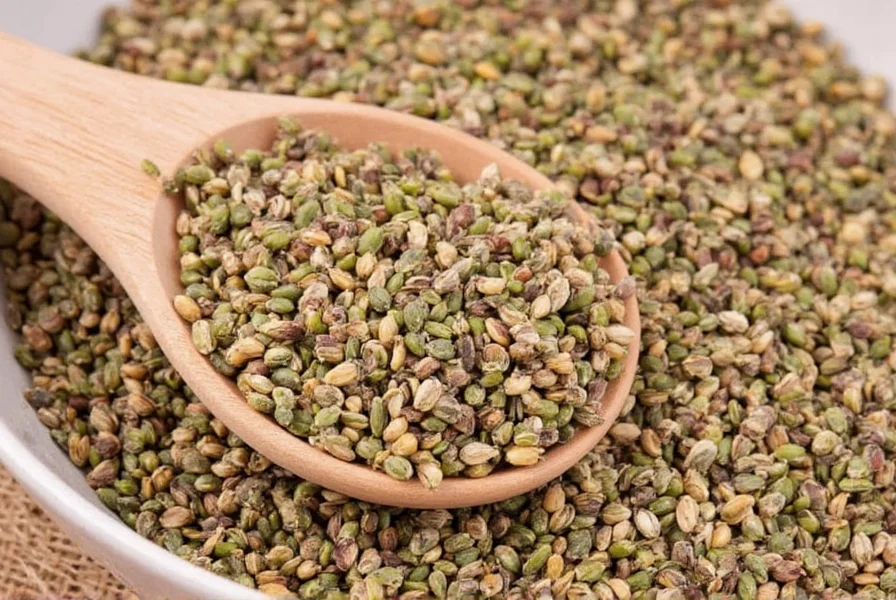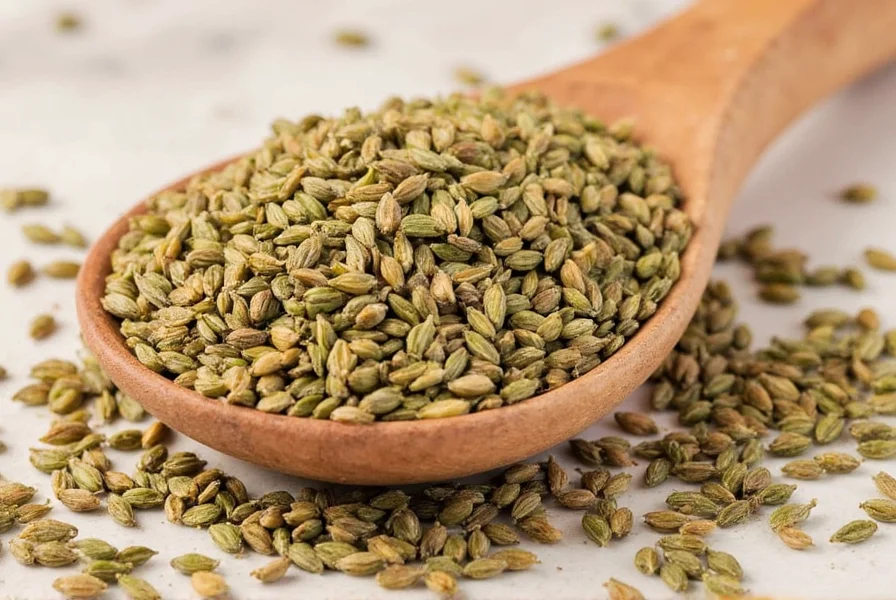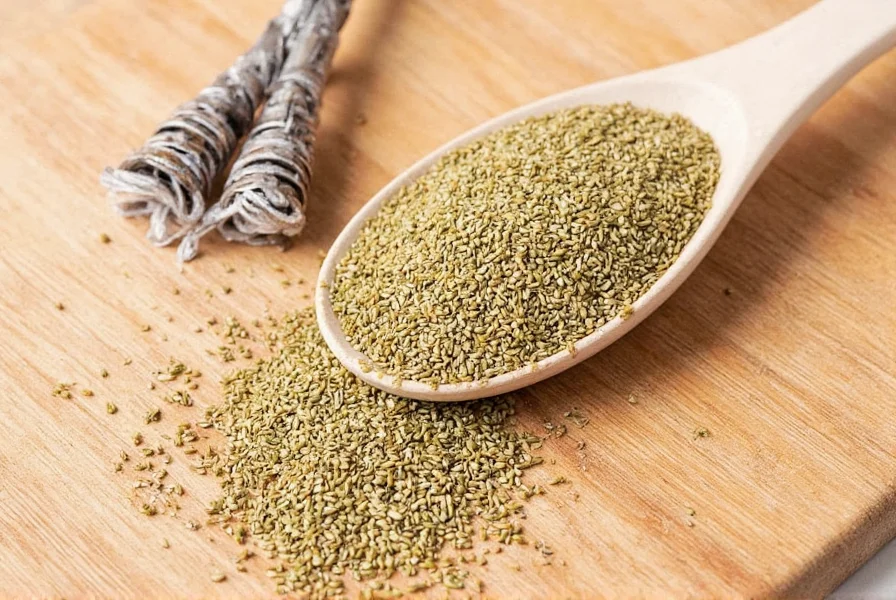When you're in the middle of cooking and realize you're out of fennel seeds, knowing the right substitute can save your recipe. Fennel seeds have a distinctive sweet, licorice-like flavor with subtle earthy notes that's essential in many Mediterranean, Indian, and Italian dishes. Understanding which alternatives work best depends on your specific recipe and flavor preferences.
Understanding Fennel Seed Flavor Profile
Fennel seeds contain anethole, the same compound that gives anise and licorice their characteristic flavor. This sweet, slightly floral taste with herbal undertones makes them versatile in both sweet and savory applications. When selecting a replacement for fennel seeds, consider whether your recipe needs primarily the licorice note or the more subtle herbal qualities.
Top 7 Fennel Seed Substitutes Ranked

1. Anise Seeds (Best Overall Substitute)
Anise seeds provide the closest flavor match to fennel seeds with their pronounced licorice taste. Use a 1:1 ratio when substituting. Anise is slightly sweeter and more intense than fennel, so for delicate recipes, consider using 3/4 teaspoon of anise for every 1 teaspoon of fennel seeds required. This substitute works exceptionally well in Italian sausage recipes and breads like focaccia.
2. Dill Seeds (Best for Pickling and Fish Dishes)
Dill seeds offer a milder licorice flavor with distinctive grassy notes. Use a 1:1 substitution ratio. While not as sweet as fennel, dill seeds work particularly well in pickling recipes, fish dishes, and potato salads where you want the licorice note without overwhelming the other flavors. This fennel seed replacement for pickling delivers excellent results without dominating the final product.
3. Caraway Seeds (Best for Hearty Dishes)
Caraway provides a similar licorice flavor but with more pronounced earthy, peppery notes. Use a 3:4 ratio (3/4 teaspoon caraway for 1 teaspoon fennel). This substitute shines in rye bread, sauerkraut, and hearty stews. When seeking a fennel seed substitute for sausage making, caraway works well in German-style sausages but may overpower more delicate Italian varieties.
4. Fennel Pollen (Premium Option)
Fennel pollen is the most concentrated form of fennel flavor. Use only 1/3 teaspoon of pollen for every 1 teaspoon of fennel seeds. This expensive but potent substitute delivers intense floral-anise notes and works beautifully as a finishing spice. It's the ideal replacement for fennel seeds in high-end recipes where authenticity matters most.
5. Star Anise (Best for Liquid-Based Recipes)
One star anise pod equals approximately 1 teaspoon of fennel seeds. The flavor is stronger and more medicinal, so remove the pod before serving. This substitute works exceptionally well in braises, soups, and mulled wines where the whole spice can be easily removed. When considering fennel seed alternatives for slow-cooked dishes, star anise provides excellent depth of flavor.
6. Celery Seeds (Best Neutral Substitute)
Celery seeds offer a mild, slightly peppery flavor without strong licorice notes. Use a 1:1 ratio. While not a perfect match, celery seeds work well when you need fennel's textural element without the distinctive flavor—ideal for certain spice blends where fennel plays a supporting role rather than starring position.
7. Cumin (Situational Substitute)
Cumin provides earthiness without the licorice note. Use half the amount of cumin as fennel seeds required. This works surprisingly well in some spice blends like curry powders where both spices appear, but avoid using cumin as a fennel seed replacement in Italian sausage or bread recipes where the licorice flavor is essential.
| Substitute | Ratio | Flavor Profile | Best For | Limitations |
|---|---|---|---|---|
| Anise Seeds | 1:1 | Strong licorice, slightly sweeter | Italian sausage, breads, tomato sauces | Can overpower delicate dishes |
| Dill Seeds | 1:1 | Mild licorice, grassy notes | Pickling, fish dishes, potato salads | Less sweet than fennel |
| Caraway Seeds | 3:4 | Earthy licorice, peppery | Rye bread, sauerkraut, hearty stews | Stronger earthy notes |
| Fennel Pollen | 1:3 | Intense floral-anise | Finishing spice, premium dishes | Expensive, use sparingly |
| Star Anise | 1 pod:1 tsp | Strong medicinal licorice | Braises, soups, mulled wines | Must remove before serving |
Practical Substitution Guidelines by Dish Type
Not all fennel seed replacements work equally well across different recipes. Understanding which substitute works best for your specific dish ensures optimal results:
For Italian Sausage Making
Anise seeds provide the closest flavor match for traditional Italian sausage. Use equal parts anise to replace fennel seeds. For a more authentic profile, combine 3/4 teaspoon anise seeds with 1/4 teaspoon caraway seeds per teaspoon of fennel required. This fennel seed substitute for sausage making delivers the characteristic flavor without requiring specialty ingredients.
For Baking and Bread Recipes
Fennel pollen offers the most authentic flavor in breads but is expensive. For everyday baking, anise seeds at a 1:1 ratio work well in focaccia and breadsticks. In sweet applications like biscotti, consider using a combination of 3/4 teaspoon anise seeds and 1/4 teaspoon ground coriander to mimic fennel's complexity.
For Vegetable Dishes and Salads
Dill seeds make an excellent fennel seed replacement in roasted vegetables and salads. Their milder flavor won't overpower fresh ingredients. Use equal parts dill seeds to replace fennel, and consider adding a pinch of lemon zest to enhance the herbal notes that fennel would normally provide.
For Fish and Seafood Preparations
When preparing fish dishes that call for fennel seeds, dill seeds provide the most complementary flavor. Use a 1:1 substitution ratio. For gravlax or other cured fish preparations, combine dill seeds with a small amount of coriander for a balanced flavor profile that mimics fennel's complexity.

Common Mistakes to Avoid When Substituting Fennel Seeds
Even experienced cooks make these errors when seeking fennel seed alternatives:
- Using ground spices instead of whole seeds - Grinding substitutes changes their flavor release and intensity. Always use whole seeds unless the recipe specifically calls for ground fennel.
- Not adjusting for flavor intensity - Anise and star anise are stronger than fennel. Start with less and taste as you go, especially in delicate recipes.
- Ignoring recipe context - A fennel seed substitute for baking won't necessarily work well in sausage making. Match your substitute to the dish type.
- Overcompensating with multiple substitutes - Using several substitutes simultaneously creates flavor confusion. Choose one primary replacement and adjust as needed.
Creating Your Own Fennel Seed Substitute Blend
For recipes where fennel plays a starring role, consider creating a custom blend that captures multiple aspects of fennel's complex flavor:
Basic Fennel Substitute Blend:
3 parts anise seeds
1 part caraway seeds
1 part dill seeds
Grind these together in a spice grinder or mortar and pestle. Use 3/4 teaspoon of this blend for every 1 teaspoon of fennel seeds required. This fennel seed replacement blend works particularly well in sausage recipes and hearty vegetable dishes where fennel's flavor should shine through.
Storing Your Substitute Spices Properly
Proper storage maintains the potency of your fennel seed alternatives. Keep all seed spices in airtight containers away from light and heat. Whole seeds retain their flavor for 1-2 years, while ground spices lose potency within 6 months. For the best results with fennel seed substitutes, toast them lightly in a dry pan before use to release their essential oils and maximize flavor impact.











 浙公网安备
33010002000092号
浙公网安备
33010002000092号 浙B2-20120091-4
浙B2-20120091-4